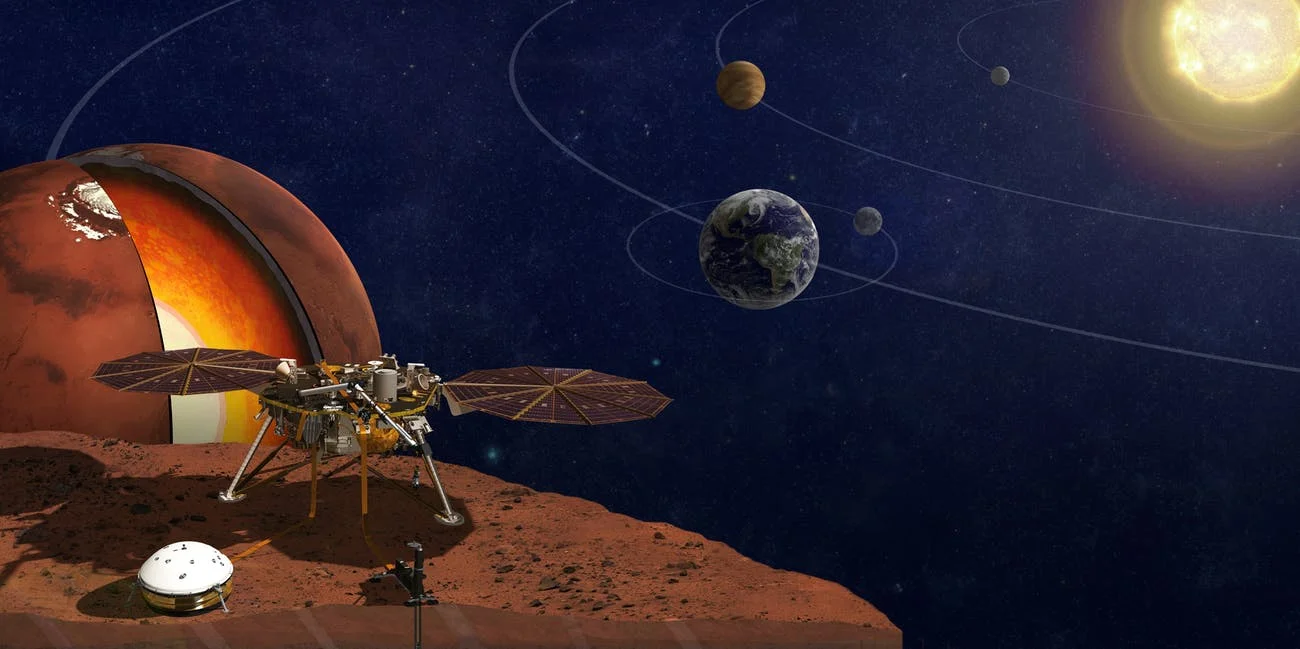Was a Lake Just Discovered on Mars?
Image Credits: ESA/ATG medialab; Mars: ESA/DLR/FU Berlin, CC BY-SA 3.0 IGO
Kind of.
The ESA Mars Express has detected evidence of liquid water hidden below the southern polar ice cap of Mars - which is a HUGE deal.
Previous research has shown that there was likely water on Mars at one point (most of it has since frozen into ice), however no evidence of current liquid water has been discovered until now.
How was the Mars lake discovered?
The Mars Advanced Radar for Subsurface and Ionosphere Sounding instrument (MARSIS), is the radar instrument utilized, which examines the surface and subsurface of the planet to retrieve information for analysis. The images below help illustrate this for us non-scientists:
What's the Mars lake like?
The "lake" is estimated to be about 12 miles across, and while you likely won't find fish swimming in it, this discovery does support the possibility of microbial life.
According to BBC:
"It's probably not a very large lake," said Prof Roberto Orosei from the Italian National Institute for Astrophysics, who led the study.
Marsis wasn't able to determine how thick the layer of water might be, but the research team estimate that it is a minimum of one metre.
"This really qualifies this as a body of water. A lake, not some kind of meltwater filling some space between rock and ice, as happens in certain glaciers on Earth," Prof Orosei added.
So what does this mean?
Is there life on Mars? Maybe. Can we prove it? Not yet. We need to get there with the proper instruments, but at least now we have a much better map to show us where to begin looking.
Dr Manish Patel from the Open University explained to BBC: "We have long since known that the surface of Mars is inhospitable to life as we know it, so the search for life on Mars is now in the subsurface. This is where we get sufficient protection from harmful radiation, and the pressure and temperature rise to more favourable levels. Most importantly, this allows liquid water, essential for life.
"We are not closer to actually detecting life, but what this finding does is give us the location of where to look on Mars. It is like a treasure map - except in this case, there will be lots of 'X's marking the spots."












